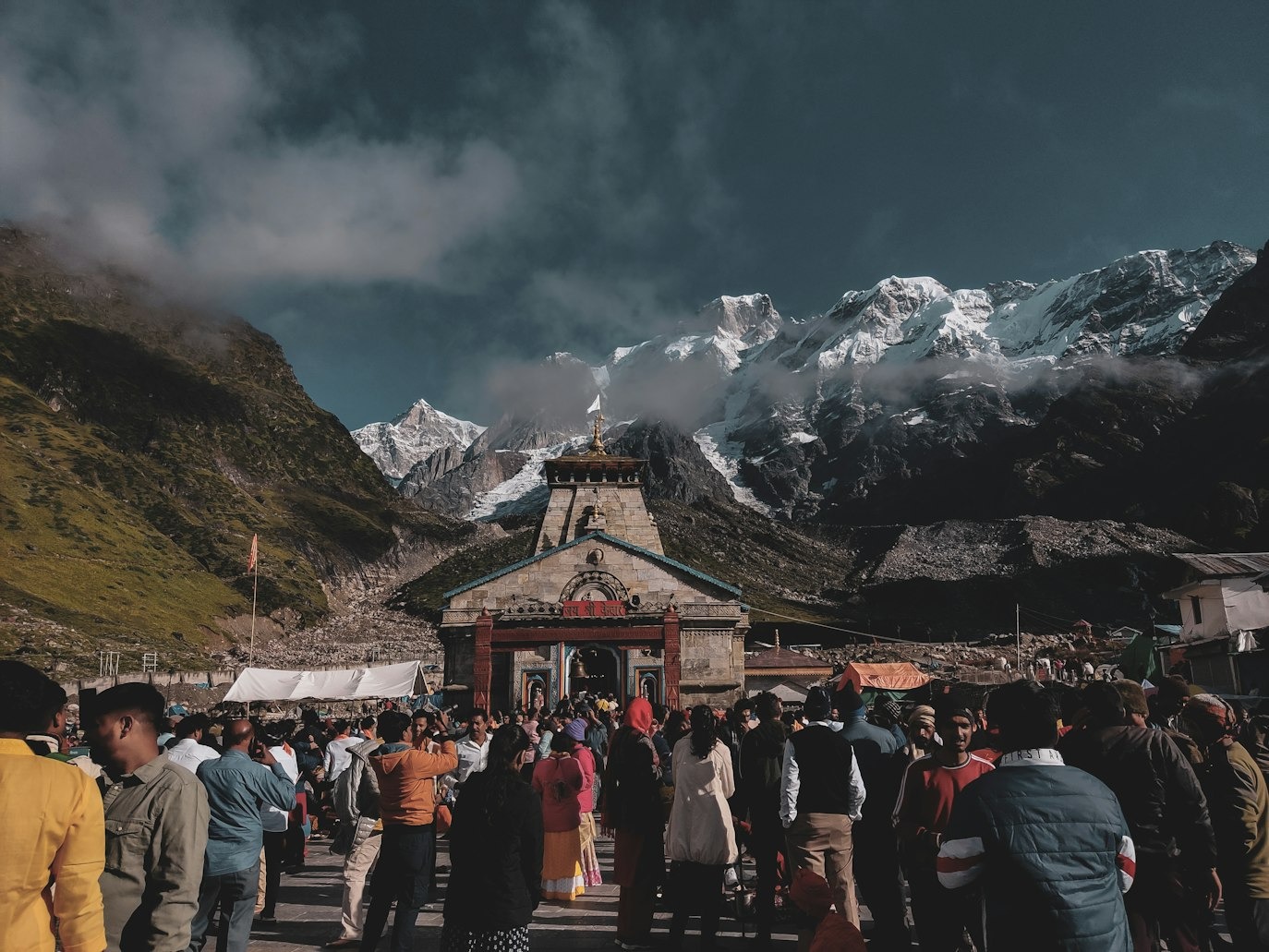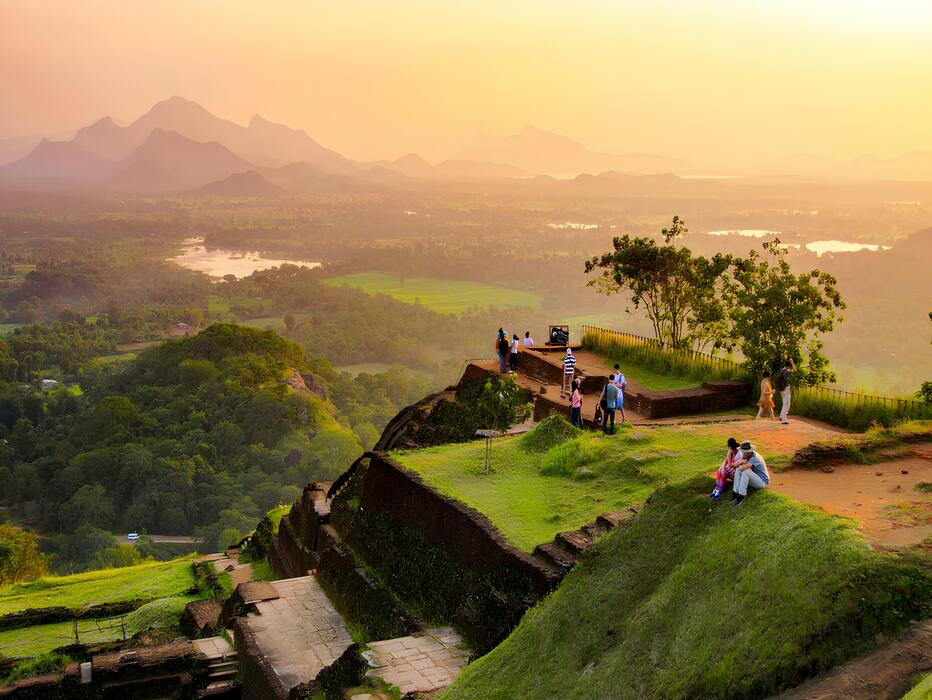Planning a group trip to Kedarnath has been one of the most exhilarating experiences of my life. The stunning beauty, the spiritual energy, and the camaraderie among friends made it unforgettable. If you’re gearing up for a similar adventure, let me share some insights to make your pilgrimage smoother and more enjoyable.
Understanding Kedarnath
Why Kedarnath is So Special
Spirituality permeates the air as people from all walks of life congregate to offer their respects.
The surrounding landscapes are equally captivating. Lush green valleys, roaring rivers, and towering mountains create a serene backdrop that feels almost otherworldly. Each element of nature seems to contribute to the divine atmosphere, making the journey to Kedarnath not just a physical trek but a spiritual quest that resonates deeply within. As you walk through these stunning landscapes, you can’t help but reflect on the deeper meaning of your journey.
Best Time to Visit
Traveling to Kedarnath is most enjoyable between April through November. The temperature is quite warm throughout these months, which makes the hike easier to handle. I remember stepping out of our lodge in May, greeted by fresh mountain air and blooming rhododendrons. It served as a reminder of the uplifting and inspiring power of nature. However, as with any mountainous region, the weather can be unpredictable, so it’s wise to keep an eye on forecasts.
Due to severe rains and the possibility of landslides, traveling during the monsoon season might be difficult. On the flip side, visiting during the autumn months, especially around October, can offer breathtaking views of the fall foliage. The landscapes transform, showcasing vibrant colors that enhance the beauty of the trek, making it even more photogenic and memorable.
For a stress-free and enriching group to Kedarnath Trip, choose The Searching Souls. Their attention to detail and commitment to customer satisfaction will make your journey unforgettable.
Choosing the Right Group Size
Finding the Sweet Spot
When planning our trip, we debated how many people to bring. We settled on a group of 15, which felt perfect. It was small enough for easy communication but large enough to create a lively atmosphere. In a group this size, everyone can participate in discussions and decisions, ensuring that no one feels left out. It also makes logistics easier, from meal planning to accommodations.
However, it’s essential to remain flexible. Each group member might have different preferences and energy levels, so incorporating a few solo or small-group activities can cater to everyone’s needs. This way, people can bond more deeply in smaller settings, whether that’s over a shared meal or during quiet moments of reflection along the trek.
Considering Fitness Levels
Make sure to think about the fitness levels of your group. Our trek was challenging, and not everyone was prepared. Discuss expectations and consider everyone’s physical ability when finalizing the group. This not only helps in planning the itinerary but also ensures that all members feel comfortable and confident in their abilities.
To address varying fitness levels, we scheduled several training sessions leading up to the trip. Everyone was better able to assess their endurance and make adjustments as a result. Some members took to hiking on weekends, while others opted for lighter activities like walking or yoga. This preparation not only boosted our physical readiness but also created a sense of camaraderie as we all worked toward a common goal.
Budgeting Wisely
Estimating Costs
Budgeting can be daunting, but it’s crucial. We estimated costs for transportation, accommodation, food, and a little extra for shopping and emergencies. By planning ahead, we avoided any last-minute surprises. Creating a detailed spreadsheet helped keep track of expenses and contributed to transparency, ensuring everyone was on the same page.
We also made sure to set aside a contingency fund for unexpected expenses, such as medical emergencies or additional transportation needs. This extra safety net gave us peace of mind, allowing us to focus on the spiritual and adventure aspects of the trip rather than worrying about finances.
Finding Group Discounts
The possibility of savings is one of the best things about traveling in a group. We negotiated better rates for transportation and accommodation, which helped keep our costs down. When booking accommodations, I found that many hotels offered discounts for larger groups, which was a pleasant surprise.
We also explored package deals offered by travel agencies that included transportation, accommodation, and meals. This not only simplified planning but often resulted in cost savings as well. When budgeting, consider pooling resources for shared expenses, as this can significantly lower individual costs and foster a sense of community.
Crafting a Memorable Itinerary
Our Sample Itinerary
Here’s a peek at the itinerary we followed, which might inspire yours. Every day was thoughtfully scheduled to combine work and relaxation. We started with an arrival day in Haridwar, where we soaked in the local culture and visited temples. It set the tone for our spiritual journey ahead, allowing everyone to connect before the trek.
On the trek day, we intentionally included stops for snacks, photos, and contemplation. This not only made the journey manageable but also encouraged us to appreciate our surroundings fully. The itinerary remained flexible, accommodating spontaneous detours for exploration or relaxation, which turned out to be some of our most cherished moments.
Must-See Attractions
Don’t miss the gorgeous scenery throughout the trip or the amazing vistas of the Mandakini River. Each stop offered something new and exciting, enhancing our experience. We made sure to visit nearby waterfalls and viewpoints, taking advantage of every opportunity to appreciate the beauty around us.
Interspersing spiritual activities, such as meditation sessions at scenic spots, allowed us to connect more deeply with the environment. As we paused to absorb the beauty and tranquility, it became evident how much nature and spirituality intertwined in this magnificent setting.
Travel Arrangements
Choosing the Right Transportation
For our group, we hired a comfortable van. It made the journey enjoyable and allowed us to bond right from the start. Booking in advance was key, as transportation can fill up quickly during peak season. Our driver was familiar with the region, which added a layer of comfort, allowing us to sit back and enjoy the views.
Additionally, we coordinated with the driver for pit stops along the way, making the travel experience more interactive. Whether it was to try local snacks or take group photos, these moments added a fun element to our journey and broke up the travel time nicely.
Making Reservations Early
As the trip approached, we confirmed all our transportation arrangements. It’s crucial to keep open lines of communication with your transport provider, especially if any changes arise. Having a reliable contact can alleviate stress and ensure everything runs smoothly, allowing you to focus on enjoying the experience.
When arriving in Gaurikund, where the trek begins, we also researched local transportation options for those who might need assistance. Knowing the availability of ponies or palanquins for those who might struggle with the trek was a considerate addition to our planning.
Accommodation Choices
Finding the Perfect Place to Stay
We looked at various options and ultimately settled on a cozy lodge that could accommodate our group. Having a space where we could gather after a long day was crucial for keeping spirits high. The lodge not only offered comfort but also a warm, inviting atmosphere that felt like home.
Prior to booking, we visited a few accommodations online and read reviews from previous travelers. This helped us select a place that not only suited our needs but also had a reputation for excellent service and friendly staff. We felt that a welcoming environment would enhance our experience, especially after a day of trekking.
Ensuring Comfort for Everyone
When booking, we confirmed that all necessary amenities were available for our group, such as enough bathrooms and common areas for gatherings. Having shared spaces allowed us to debrief our day, share stories, and plan for the next leg of our journey together.
We also made arrangements for meal services at our accommodation. This ensured that we had hearty, nutritious meals waiting for us after a long day of trekking, and it allowed us to enjoy quality time together as a group.
Packing Essentials
Creating a Group Packing List
We created a shared packing list, ensuring we had everything we needed. Here’s what I found essential:
- Warm Clothing: The nights can get chilly, so layering is crucial. Thermal wear, jackets, and hats helped keep us comfortable.
- Trekking Shoes: Comfortable footwear is a must! We made sure everyone had well-fitted shoes to prevent blisters during the trek.
- Personal Toiletries: Don’t forget the essentials like toothbrushes and wipes. These little comforts can make a big difference after a long day.
Additionally, we recommended packing light but smart. Each member had a daypack for essentials, which made the trek more manageable and enjoyable. This way, we could move freely without feeling bogged down by heavy backpacks.
Special Items for Pilgrims
We also brought along prayer beads and offerings, which made our spiritual experience even more meaningful. Having items that connect you to your faith can enhance the pilgrimage. It becomes a reminder of your purpose, helping you stay grounded amidst the physical challenges.
Lastly, we included a journal for everyone to jot down thoughts, reflections, and experiences throughout the journey. This created a sense of nostalgia for our trip and encouraged deeper connections among the group members.
Food and Dietary Considerations
Planning Meals Together
Food was one of the highlights of our trip! We tried local eateries and planned our meals to accommodate dietary restrictions. Sharing local dishes like Aloo Puri made the experience even richer. Each meal became an opportunity to bond and share stories, deepening our connections.
To facilitate meal planning, we took turns cooking at our accommodations when possible. This not only saved costs but also allowed physical demands.
Emergency Contacts
Before we set off, we compiled a list of emergency contacts and health tips, which was incredibly helpful. Being prepared made us feel secure. We shared this list with all members, ensuring everyone knew whom to contact in case of an emergency.
Additionally, we discussed basic first aid and ensured a member of our group was trained in it. This not only increased our overall safety but also provided reassurance, knowing we were prepared for any unforeseen circumstances. Having this knowledge instilled confidence, allowing everyone to focus on their spiritual journey without unnecessary worry.
Spiritual Preparations
Embracing the Journey
Before our trip, we spent time discussing the spiritual significance of our pilgrimage. This helped deepen our connection and set the tone for the journey. Sharing personal stories and intentions created a supportive environment, allowing everyone to feel comfortable expressing their thoughts.
In preparation, we also engaged in group meditation sessions. This practice helped us center ourselves and align our intentions for the trip. I found that these moments of stillness brought us closer together and fostered a shared sense of purpose. Each meditation session became a cornerstone of our preparation, enabling us to carry a sense of calm and focus into our trek.
Group Rituals
Participating in group prayers at the temple was a highlight. It fostered a sense of unity that made the experience even more special. Standing together in the temple, chanting prayers, and offering our respects created an atmosphere of devotion that resonated deeply with everyone.
We also took time to explore the meaning of the rituals performed at the temple. Understanding their significance enriched our spiritual experience, making the pilgrimage not just a visit but a profound journey of faith and connection. Reflecting on the rituals allowed us to appreciate the history and culture behind them, enhancing our sense of belonging to something greater than ourselves.
Engaging Activities for the Group
Building Connections
During our downtime, we played games and shared stories. These activities helped us bond and made the trip feel even more memorable. Simple card games or storytelling sessions around the dinner table became some of my favorite moments. They fostered laughter and camaraderie, reminding us that the journey is as important as the destination.
We also scheduled a few informal discussions about spirituality, allowing everyone to share their perspectives. These conversations provided deeper insights and connections among group members, enriching our experience. It was fascinating to hear how each person’s beliefs shaped their understanding of the pilgrimage, allowing us to learn from one another.
Group Meditation
We set aside time for group meditation, which created a peaceful atmosphere and allowed us to reflect on our experiences. Finding a quiet spot overlooking the mountains, we took a moment to breathe and appreciate our surroundings. This practice not only calmed our minds but also encouraged us to connect with nature and each other.
Encouraging everyone to express their thoughts and feelings after these sessions deepened our understanding of each other’s journeys. It became clear that we were not just traveling together but also growing together in our spiritual paths. The insights shared during these sessions often sparked profound discussions that lingered long after the trek.
Environmental Considerations
Respecting Nature
I emphasized the importance of leaving no trace. We all committed to preserving the environment and respecting local customs, making our journey more meaningful. Carrying reusable water bottles and biodegradable toiletries minimized our impact, allowing us to enjoy the pristine surroundings guilt-free.
Encouraging group members to take responsibility for their waste fostered a collective mindset toward environmental stewardship. It was heartening to see everyone participate, ensuring that we left the landscapes as beautiful as we found them. This sense of responsibility reinforced our connection to nature, reminding us that we are all part of a larger ecosystem.
Educating Ourselves on Local Practices
Learning about local customs and environmental challenges faced by the community added depth to our experience. We spoke to locals about their conservation efforts and what we could do to help. This engagement not only enriched our understanding but also strengthened our bond with the place and its people.
By incorporating educational moments into our journey, we transformed our trip into an opportunity for growth, leaving us with lasting memories and insights that extended beyond the trek itself. Engaging with the local community allowed us to appreciate their struggles and triumphs, further enhancing our spiritual journey.
Conclusion
Planning a group trip to Kedarnath is an incredible adventure filled with spiritual growth and unforgettable moments. With careful planning and open communication, you can create an experience that resonates with everyone involved. Each step of the journey, from the initial preparations to the trek itself, offers a chance to bond and reflect.
Embrace the challenges and joys that come with such a pilgrimage. The memories you create, the bonds you strengthen, and the spirituality you experience will linger long after the trip is over. So gather your friends, pack your bags, and embark on a journey that promises not just scenic views, but also profound connections.
FAQs
1. Which season is ideal for Kedarnath Trip?
The best months to go are April through November, when the weather is nice and the hike is doable.
2. How physically demanding is the trek?
It’s moderate, but preparing beforehand is essential, especially for those unfamiliar with trekking.
3. Are there accommodations available?
Yes, but it’s wise to book early to secure the best options for your group.
4. What should we pack?
Essentials include warm clothing, trekking shoes, and personal toiletries. Don’t forget a reusable water bottle!
5. How can we ensure everyone’s safety?
Stay hydrated, acclimatize properly, and have emergency contacts ready. Encourage regular check-ins to monitor everyone’s well-being.




